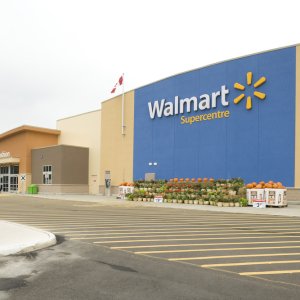
E-Commerce Revolution is Here. There Is No Going Back
 By Andrea Villar | Editorial Manager -
Mon, 06/22/2020 - 05:20
By Andrea Villar | Editorial Manager -
Mon, 06/22/2020 - 05:20
Before the pandemic hit Mexico, Constanza Moncada was used to getting everything she needed from brick-and-mortar stores. However, the lengthy lockdowns forced her to do something she had never considered before: buying online.
“I tried to buy what I needed beforehand to not leave my house but eventually emergencies arise and I began to order stuff online that I had never considered before, such as groceries. I even downloaded Spotify to listen to the music I used to listen to during my commute,” says Moncada, retired and now a housewife.
Like her, many more people who did not trust e-commerce ventured to make their first purchase out of fear of going out and being in contact with the virus. Suddenly, e-commerce, food delivery apps and online services became the real new normal. The result: for 2Q20 there will be approximately 63.1 million e-commerce users in Mexico, estimates the Competitive Intelligence Unit (CIU).
According to data from consulting firm Kantar, there was a 26 percent increase in online shopping in Latin America during the first weeks of the COVID-19 contingency. But one fact that pushed people to buy online was the Hot Sale, the largest online sales campaign in the country. This year, companies that participated in its seventh edition made total sales of MX$20.2 billion (US$890 million) between May 22 and June 1. During the 10-day online event, digital sales grew 82 percent compared to the MX$11.1 billion (US$489 million) generated during 2019, according to information from the Mexican Association of Online Sales (AMVO).
In the midst of the pandemic, companies like The Home Depot, Walmart, Liverpool, El Palacio de Hierro and Office Depot have redirected their strategies and now their efforts are focused on digital campaigns. According to AMVO, more than 12 million people, meaning almost 10 percent of the Mexican population, made an online purchase during the Hot Sale. Visits to the sites and applications of the participating businesses grew 99 percent, going from 263.3 million in 2018 to 525.1 million visits in 2020.
“Our group is going through a complete digital transformation. We have to change the culture of the company, either by evangelizing or letting people go if they cannot accept this new culture. The physical store will remain important but we will see big changes. Large retailers like Liverpool and El Palacio de Hierro will have to do things differently,” said in an interview with Mexico Business News Eduardo Medeiros, Chief Digital Officer for LATAM and CEAM of Office Depot Group.
According to Medeiros, many retailers will have to reduce their number of stores and create new ones with different formats. “For instance, outlets or luxury branches. These smaller stores, in other words, will become more niche-focused,” he explains.
In 1Q20, Walmart Mexico, the largest retailer in the country, increased its profits by 15.4 percent to MX$10 billion (US$420 million) from MX$8.7 billion (US$364.3 million) in the same period of 2019. The company also reported e-commerce sales grew 68 percent as daily orders doubled, requiring 1,700 new workers to handle demand. Results reflected high demand for essential goods due to the crisis unleashed by COVID-19, said Walmart Chief Executive Guilherme Loureiro in the annual report.
“The penetration curve will steepen throughout the e-commerce space. In particular, the online grocery segment is ready to explode. The big consumer-packaged-goods brands would much rather spend their marketing dollars on pressing customers to add their products to online grocery-shopping baskets than on ads for television or Facebook. That is because online shopping can guarantee sales performance,” said in an interview with MBN Ricardo Weder, Founder and CEO of Jüsto, a Mexican online supermarket that started operating in September 2019.
May the Best Win
For native digital companies, the story is different. While large companies from other industries modify their strategies to focus on their digital transformation, for tech giants like Amazon, Google or Microsoft, the objective is to capture more users while the pandemic is still raving. In 2017, Amazon established itself as the preferred platform for shopping in Mexico and for the first time displaced Mercado Libre as the e-commerce leader in the country. That year Amazon had 8.8 percent of market share and Mercado Libre 8.5 percent.
The stock market valuation of Mercado Libre has grown by 77 percent since April 2 thanks to the confinement of a large part of Latin America´s population, considered to be the company’s main market, and the growth of Mercado Pago, the company’s electronic payment platform. In Mexico, according to David Geisen, Country Manager of Mercado Libre, the company increased its revenues by 81 percent in 1Q20.
In February, the Argentina-based company said it will invest US$420 million this year in Mexico, its fastest-growing market, up 46 percent from 2019. David Geisen said the resources will be earmarked to increase its product line but mainly to strengthen its logistics network and to launch investment accounts for individuals, its new financial product. “Mexico keeps growing far above Latin America as a whole, and it is a key market for Mercado Libre this year,” he added.
According to a list published in late June by the Financial Times, Amazon, Microsoft, Apple, Tesla and Mercado Libre are among the top 100 companies that have gained the most from the COVID-19 pandemic crisis. In first place is Amazon with a market capitalization of US$401.1 billion, as it became the first resource for people to access essential products. In second place is Microsoft, with a market capitalization of US$269.9 billion, after 75 million people used its Teams platform in just one day in April. The company led by Satya Nadella is followed by Apple, with a market capitalization of US$219.1 billion, as its sales increased despite being forced to close shops due to lockdown measures throughout the world.
Facebook also wants to compete with the e-commerce giants and in March, Mark Zuckerberg's company launched Shops, an online shopping service that will allow businesses to display and sell products on their social media platforms. “Our goal is to make shopping seamless and empower anyone, from a small business owner to a global brand, to use our apps to connect with customers,” said the California-based company in a statement. According to AB Bernstein, Shops could unlock a US$1.3 trillion market, while Morgan Stanley said the company can become a competitor to Amazon and Alphabet.
The pandemic is not over yet and neither is the competition between companies for a bite of the e-commerce pie. "The day we had to stay at home marked a turning point for the industry. From that moment on, all of our purchases were through e-commerce in response to physical restrictions. I do not think we are going to return to life as we had it a few months ago," said on ZenDesk’s webinar ‘The impact of Customer Experience in the E-Commerce industry” Founder of Customer-Centric E-Commerce Leticia Espinosa.
Everyone Wants a Piece of the Cake
Since the COVID-19 contingency began in Mexico, home delivery apps have also seen an increase in demand due to stay-at-home orders. In March, restaurant consumption through Rappi rose 10.98 percent, while Uber Eats saw growth of 6.24 percent, revealed a Fintonic report. Likewise, in April, Rappi increased its restaurant orders by 44.34 percent, while Uber Eats surged 24.06 percent and DiDi Food saw a rise in demand for deliveries of 15.12 percent. Meanwhile, in May, consumption in restaurants through Rappi increased 38.58 percent, while Uber Eats rose 14.80 percent, and DiDi Food increased 4.46 percent.
"In tune with health measures and in the presence of the novel coronavirus, Mexicans drastically reduced their consumption in restaurants while increasing the use of home delivery apps. However, as the months go by, consumption in restaurants registered a slight recovery,” explains the study “Consumption in Food Delivery Apps During Covid-19 in Mexico.”
In 1Q20, the Uber Eats division gave a big boost to the company's revenue of US$3.543 billion, 14 percent more than in 1Q19, as users increased food orders by 52 percent. “In Mexico, we are present in 49 cities in 29 states. Our goal is to reach every Mexican, with more cities and states on our horizon. We want to go from almost 50 cities to 100. At the same time, we are working to expand our geo-footprint in the cities where we already operate. We recently expanded to a few very large neighborhoods on the eastern side of Mexico City. We want to continue our expansions throughout next year, aiming to increase our square kilometer coverage by 30 percent in 2020,” told MBN José García-Pimentel, Director and General Manager of Uber Eats México.
In October 2019, Uber announced the acquisition of Cornershop, a delivery service platform for groceries. However, both companies are still waiting for the Federal Economic Competition Commission (COFECE) to approve the acquisition in Mexico, which could take place until the end of 2020. The agency must also assess the risks that this acquisition implies for competition in the country. According to analysts, the chances that COFECE will reject the agreement are minimal because, unlike Walmart, Uber does not yet have a share in the retail store market.
In the case of DiDi Food, which began operating in February 2019 in the country, success has also been escalating. At present, the platform has presence in three cities in Mexico. “We have been able to use different locations in the country as testing grounds for many of our developments,” told MBN Juan Andrés Panamá, Director of Operations of DiDi Mexico.
But the market has not been kind to all. In December last year, food delivery app startup Postmates closed its office in Mexico City. According to analysts, factors that might have precipitated this decision include the intense competition for Mexico City market share with both national and international food delivery app startups such as UberEats, DoorDash, Rappi, SinDelantal and Didi Food.
An Enemy for E-Commerce?
For decades, if an international company established itself abroad, the government has had the right to tax them. However, when the internet came along, controlling companies offering services and products through this channel became more difficult. Then the dilemma arose of how to collect taxes from large technology companies since, like others, they make profits from the population in the countries they operate.
Starting on June 1, the digital tax in Mexico became a living reality for digital platform users. However, after companies like Netflix in Mexico began to charge a tax to users in early May, Manager of Digital Commerce and International Organizations of the Latin American Internet Association (ALAI) Sissi De La Peña, warned that excessive regulation of tech companies could affect the digital economy by inhibiting innovation and new developments.
"The digital economy tries to find alternative solutions to problems that we do not have at the moment and excessive regulation in all cases can inhibit this development of new services. All countries and companies have been in an extensive collaborative development with the OECD, which expects to have results by the end of 2020 with something much more specific on audit issues," said De La Peña at the 11th edition of the Escuela del Sur Internet Governance.
For Kelly Kroger, CEO of C&A in Mexico, a retail fast-fashion company with digital presence in Mercado Libre, those kinds of measures need to be understood as they go. “At C&A, we are in favor of fair competition and fair law enforcement. We are not concerned; we believe that this is part of the maturity that the digital transformation is reaching in Mexico and at the end of the day, we will have to understand it. It is always good to have healthy competition, which only benefits the customer,” she told MBN.
Economic Downturn: Another Obstacle
Although last year looked very well for most companies. Between growth plans and new business models, businesses like Uber and Airbnb did not stop growing. But then, the pandemic struck the world. Companies have been forced to make staff cuts, reduce growth expectations and have even decided to continue operating without profit but with the intention of keeping their business alive.
"Before the pandemic, companies like Airbnb and Uber enjoyed tremendous momentum in industries such as transportation, tourism and even apparel," PwC Consumer Market Analyst Steve Barr said in an interview with AFP. Barr had long predicted that the ‘shared economy' would generate US$335 billion in revenue by 2025. "I think there will be a very significant change in consumer behavior," he says now.
In Mexico, economic growth forecasts in 2020 have already suffered reductions due to the COVID-19 outbreak. As of June, JP Morgan Chase has the most pessimistic outlook, forecasting a 10.5 percent contraction in Mexico's GDP. Bank of America anticipates a 10 percent drop and Evercore ISI Mexico predicts a 9.9 percent decline. Meanwhile, Mexico’s Central Bank (Banxico) estimates that the Mexican economy may contract between 4.6 percent and 8.8 percent this year, while the Ministry of Finance forecasts a drop of up to 3.9 percent.
Against this gloomy scenario, M&As are an alternative for companies to survive the crisis. "In all crises, there are sectors that react contrary to the majority, such as companies that now have cash flow they did not expect. Now, they are analyzing what to do with that liquidity. Opportunities may arise in mergers and acquisitions,” said Abraham Maldonado, partner at Valuation Services at PwC México during the webinar ‘How to Get the Economy to Move Again’ from Expansión.













